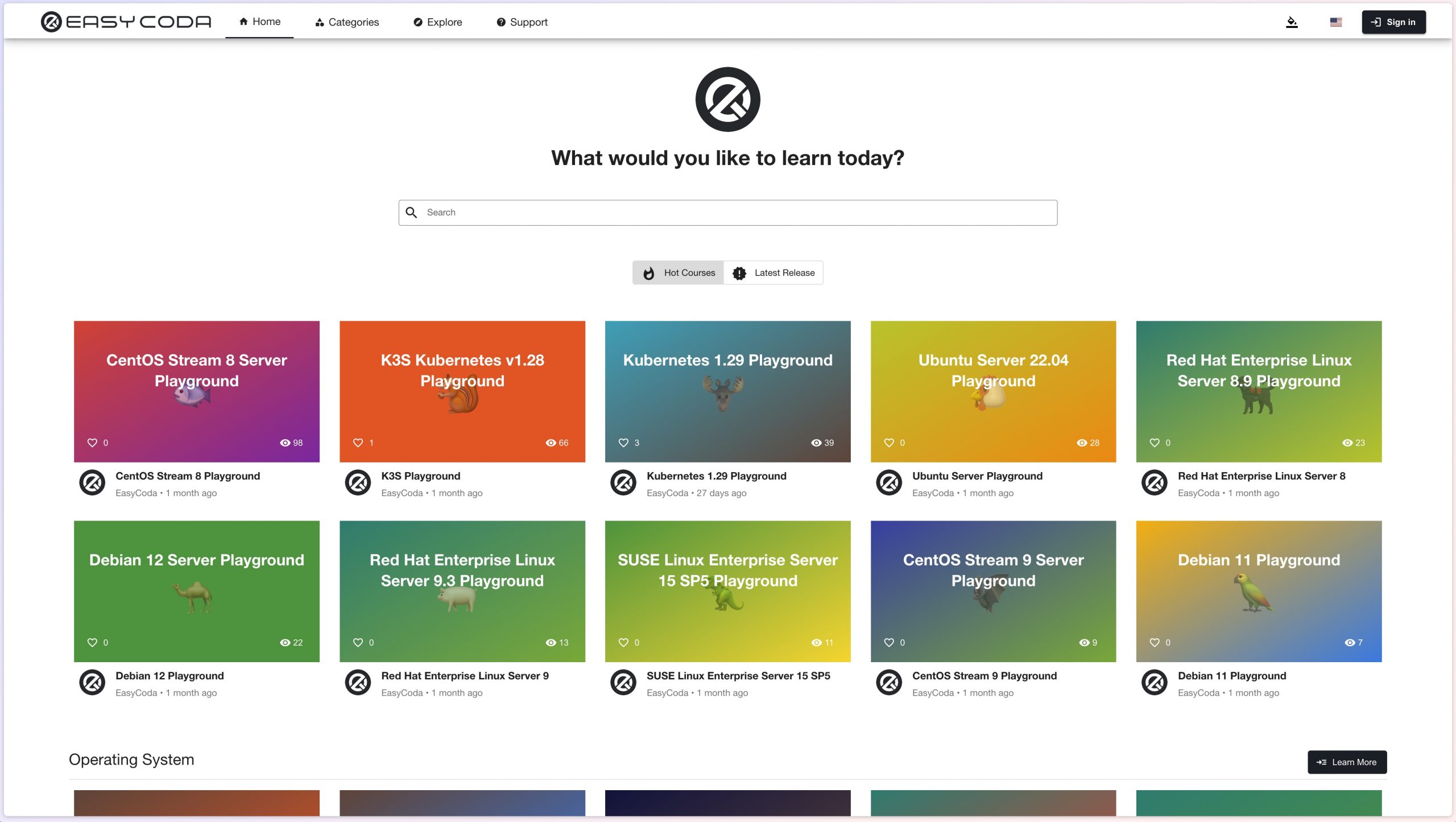EasyCoda introduces a new way to learn—through an interactive environment that emphasizes Learn By Doing. This platform provides ready-to-use online lab environments for various learning scenarios, such as Kubernetes, Docker, JupyterHub, and more. You can dive in, practice hands-on, and learn at your own pace.
Over the past few months, building on the foundation of our 1.0 version, we have integrated user feedback and added new features to meet the needs of more users. To make life easier for programmers, we have also incorporated AI capabilities into the platform. Now, whenever you encounter difficulties in your learning journey, you can instantly get help from AI. Additionally, you can leverage an AI assistant in the cloud to help with tasks at any time.
Let’s Recap the Features of EasyCoda 1.0:
- Interactive Learning and Practice Environment For each learning scenario, we provide cloud-based virtual machine lab environments with web terminal access. You can manually input and practice commands during your learning process, or execute commands from the documentation with a single click and view real-time results.
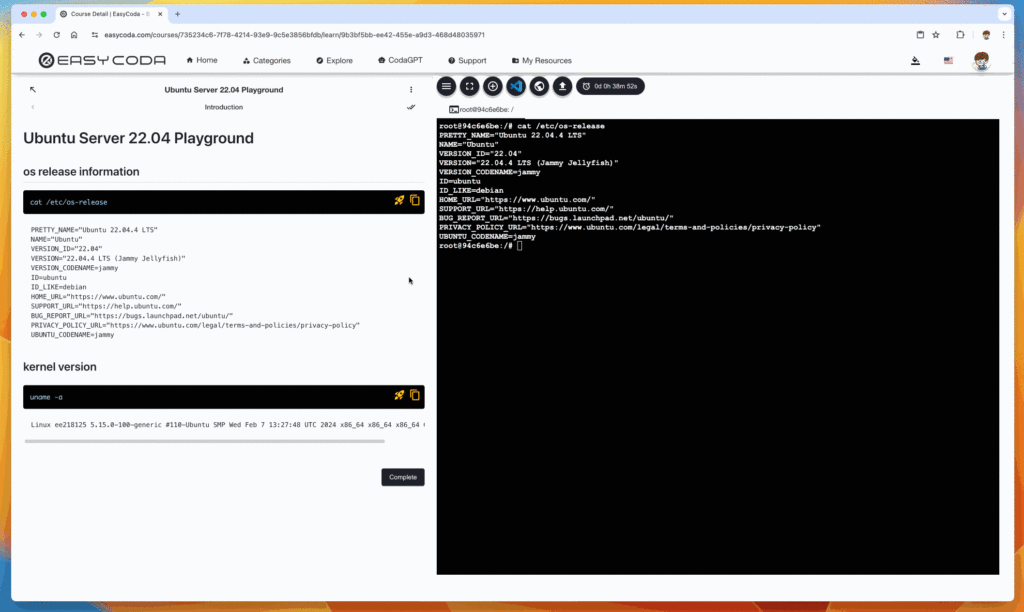
2. Cloud Integrated Development Environment (IDE)
Each lab environment is equipped with a VSCode development environment, accessible online via a web-based VSCode interface. This makes it easy for you to quickly develop and browse files, enhancing your productivity and streamlining your workflow.
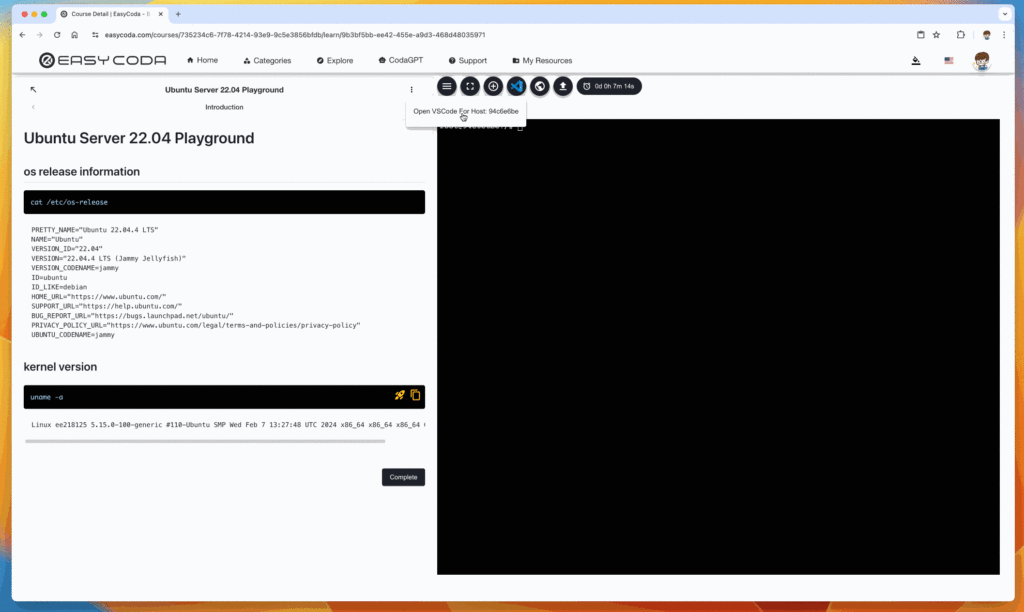
3. Application Expose
Applications you create within the lab environment can be easily accessed via the public internet. We automatically generate accessible domain names for your applications. For example, with Nginx, you simply need to input the application name and port number, and a publicly accessible domain name will be generated for you.
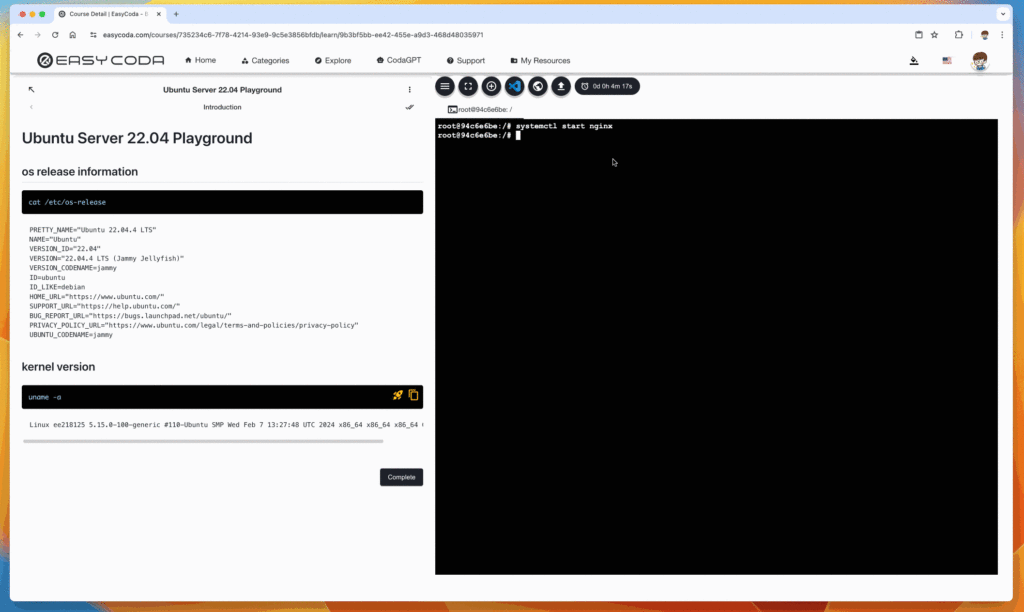
Introducing New Features in EasyCoda 2.0
1. Multi-VM Orchestration
Building on the 1.0 version, we’ve introduced the ability to orchestrate multiple lab environments (multi-VM). This means you can open multiple virtual machine lab environments simultaneously. For example, when learning to deploy a Kubernetes cluster, the platform will create multiple nodes according to the configuration of the current scenario to meet the requirements of Kubernetes cluster deployment. Once each node is ready, terminal access is provided for each node. Additionally, you can initiate multiple terminal connection requests to any node in the cluster. Application deployment and the cloud IDE have also been integrated with the multi-node environment, allowing you to deploy applications to the nodes where they are running.
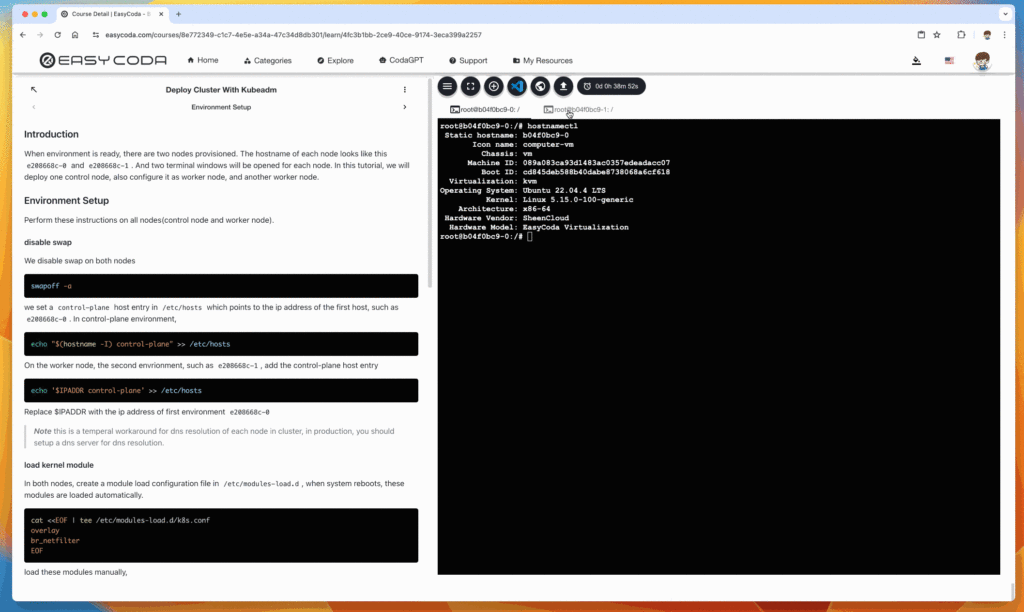
2. Persistent Storage Functionality
Now, you can start your lab environments in our persistent storage pool. When you finish practicing, you can find the lab environment in your workspace and create snapshots of it. This ensures that your learning progress is permanently saved. You can then close or delete the current lab environment, and next time, quickly start it from the snapshot to resume your previous work. The snapshot functionality does not consume your time quota.
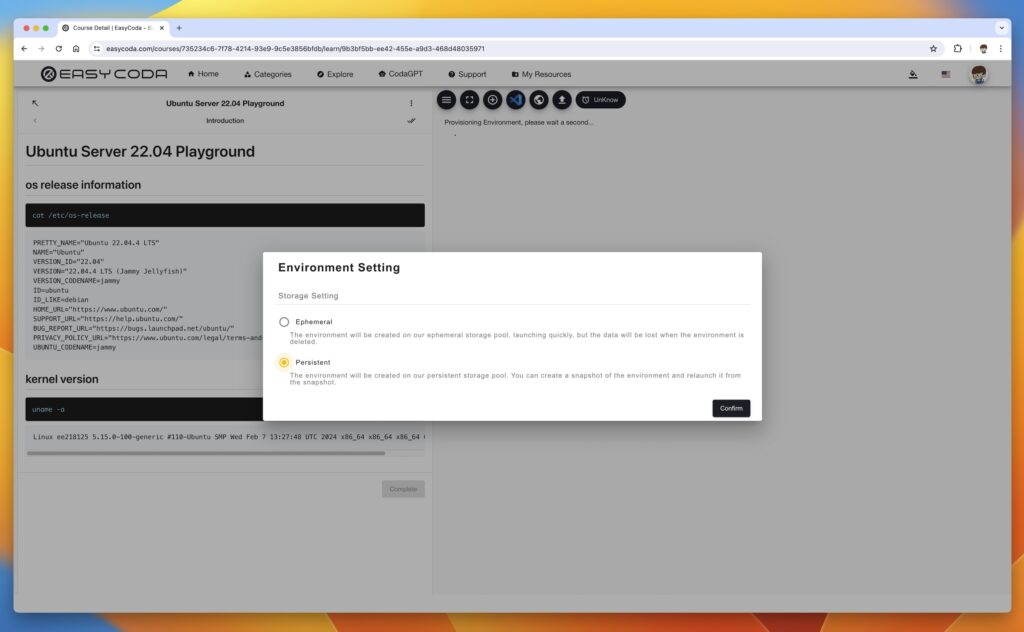
3. File Upload Functionality
You can now easily and quickly upload your local files to the lab environment. This feature allows you to seamlessly integrate your local application files into the lab environment for further development and testing.
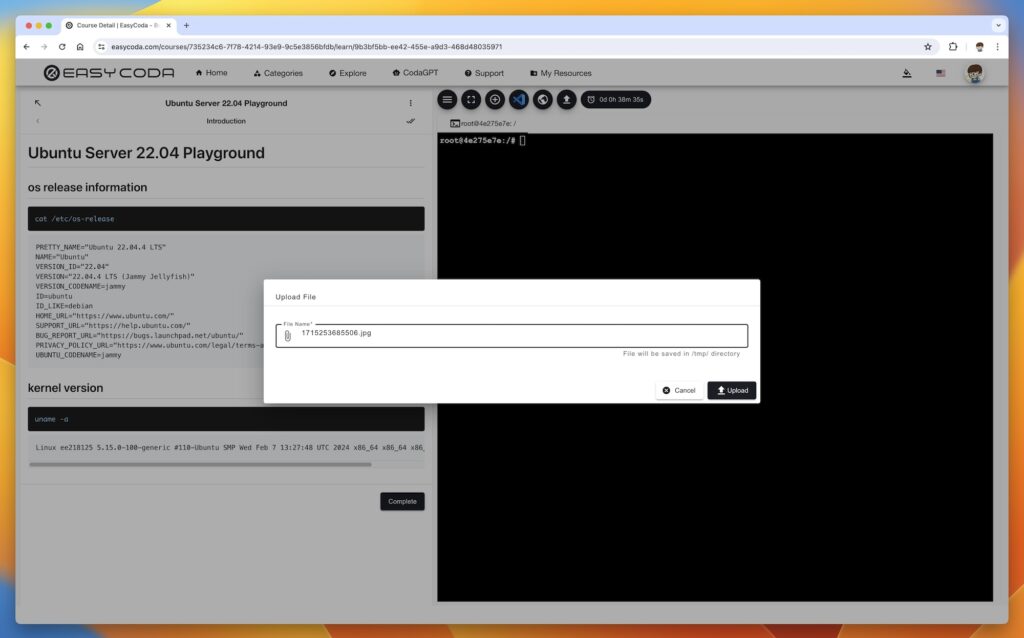
Introducing CodaGPT
We have integrated CodaGPT into the platform, an AI agent powered by large language model (LLM) technology, designed to help you get tasks done. Unlike conventional ChatGPT, which is used for text generation and conversation, CodaGPT not only answers your questions but also automatically executes commands in the lab environment and resolves errors encountered during the process.
We have enabled Linux command execution for the AI model. This means your daily tasks, whether it’s code writing, troubleshooting, or routine maintenance, can now be handled by your AI assistant.
Let’s watch a video that showcases how CodaGPT excels at task completion and problem-solving.
Try out Free: https://easycoda.com

